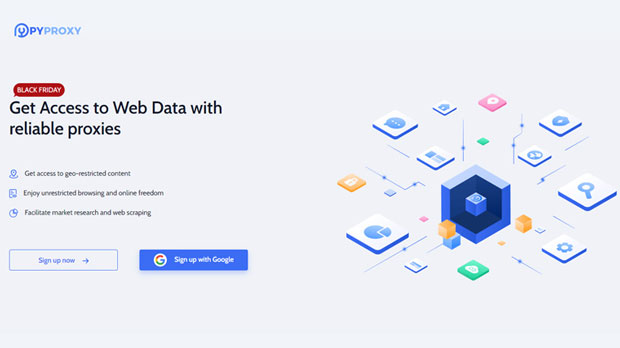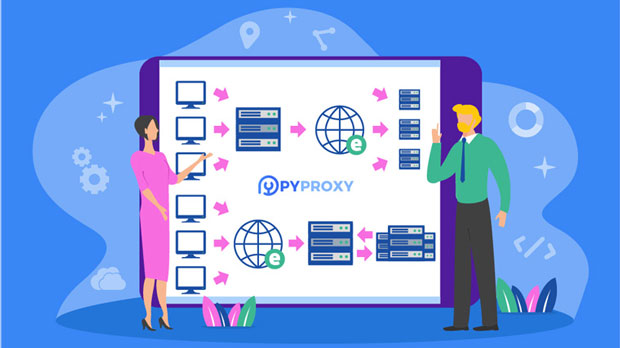How are IP proxy addresses used for cross-border e-commerce?
In today’s globalized world, cross-border e-commerce has become a significant channel for businesses looking to expand internationally. However, to successfully navigate the complexities of global markets, businesses need to overcome various barriers such as geographical restrictions, localized content, and online censorship. This is where ip proxy addresses come into play. By using ip proxies, e-commerce businesses can effectively manage and optimize their global operations, from accessing region-specific data to ensuring seamless transactions across borders. This article will delve into how IP proxy addresses can be applied in cross-border e-commerce, examining their role in market expansion, data protection, and improving overall user experience. What Are IP Proxy Addresses?Before delving into their use in cross-border e-commerce, it's essential to understand what IP proxy addresses are. An IP proxy is an intermediary server that acts as a gateway between a user’s device and the internet. When a business or individual uses an IP proxy, their original IP address is masked, and the IP address of the proxy server is used instead. This offers numerous advantages, such as increased privacy, data security, and the ability to bypass geographic restrictions. In the context of cross-border e-commerce, IP proxies allow businesses to simulate the presence of users or customers in different countries, making it possible to gather region-specific information, analyze competitive landscapes, and optimize marketing strategies.Breaking Geographical BarriersOne of the primary challenges in cross-border e-commerce is the existence of geographical restrictions. Some websites or services are only accessible from specific regions or countries. For example, some e-commerce platforms may limit access to certain product offerings or pricing based on the customer's location. By using IP proxy addresses, businesses can bypass these geographical barriers by making it appear as if they are browsing from a particular country. This is particularly useful when businesses want to access region-specific content, conduct market research, or evaluate pricing strategies of competitors in different parts of the world.For instance, a business in the United States may use an IP proxy to access European or Asian e-commerce platforms and study the localized user experience, product listings, and pricing strategies. This allows the business to gain insights into how different regions approach online shopping, which can help in tailoring their offerings and marketing efforts when expanding into these markets.Improving Market Research and Competitive AnalysisEffective market research and competitive analysis are essential for any business looking to expand into new territories. IP proxy addresses can be an invaluable tool for gathering market data, including local customer preferences, shopping behaviors, and even competitor pricing. With the help of IP proxies, businesses can track competitors' websites, social media activities, and promotional campaigns without revealing their identity. This anonymity provides the advantage of observing competitors’ strategies without risking detection or retaliation.By using multiple proxies located in different regions, businesses can monitor the effectiveness of various marketing strategies across borders. They can also analyze how competitors present their products and services in different languages and currencies, offering crucial insights into local customer behavior and preferences. This data can then be used to tailor business strategies, optimize product offerings, and enhance customer experience to suit the local market.Ensuring Data Security and PrivacyData security is a top priority for any business involved in e-commerce, especially when dealing with sensitive customer information. Cross-border e-commerce transactions often involve the transfer of personal and financial data across various jurisdictions, which may be subject to different regulations and legal requirements. Using IP proxy addresses can help businesses protect their sensitive data and ensure secure online transactions.IP proxies can act as a barrier between a business’s internal network and external threats. For example, they can mask the business's real IP address, preventing cybercriminals from launching attacks such as Distributed Denial of Service (DDoS) or phishing attempts. Additionally, IP proxies can help encrypt data, ensuring that it remains secure as it travels across international borders.Moreover, for businesses operating in multiple countries, the use of IP proxies can ensure compliance with local data protection laws. For instance, in regions like the European Union, businesses must comply with the General Data Protection Regulation (GDPR) to safeguard consumer data. By using IP proxies located in these regions, businesses can effectively adhere to these regulations while still managing cross-border e-commerce operations.Enhancing User Experience and PersonalizationCustomer experience plays a critical role in the success of any e-commerce business. One of the key factors that influence the user experience is personalization. By using IP proxy addresses, businesses can provide a localized experience for their customers, regardless of where they are located. This is especially important for businesses expanding into new markets or dealing with international customers.With the help of IP proxies, businesses can display region-specific content, such as language, currency, and product recommendations, based on the customer's location. This ensures that users feel more comfortable navigating the platform, leading to higher conversion rates and increased customer satisfaction. Additionally, businesses can customize their marketing strategies based on regional trends and consumer behavior, offering more relevant and engaging content to their target audience.For example, a customer from Japan may visit a U.S.-based e-commerce website, but through the use of an IP proxy, the website can detect their location and automatically display product listings in Japanese, as well as prices in yen. This localized approach makes the shopping experience smoother and more appealing, encouraging customers to complete their purchases.Optimizing Pricing and Inventory ManagementPricing strategies are crucial when expanding into new markets, and local market conditions can significantly affect pricing decisions. IP proxy addresses allow businesses to analyze regional pricing models and adapt their own pricing strategies accordingly. By monitoring competitor prices from different locations, businesses can determine the optimal price point for their products in each market, taking into account factors such as local demand, competition, and economic conditions.Moreover, businesses can use IP proxies to monitor inventory levels and sales trends in various regions. This data can help them optimize inventory management and prevent stockouts or overstocking in specific markets. By understanding regional demand patterns, businesses can better forecast sales and adjust their supply chain operations to meet customer needs.ConclusionIn conclusion, IP proxy addresses are an invaluable tool for businesses involved in cross-border e-commerce. They provide numerous benefits, including overcoming geographical barriers, enhancing market research, ensuring data security, improving customer experience, and optimizing pricing and inventory management. As businesses continue to expand their global presence, leveraging IP proxies will become increasingly important in staying competitive and delivering a seamless online shopping experience for customers around the world. By understanding how to utilize IP proxies effectively, businesses can unlock new opportunities and navigate the challenges of the global e-commerce landscape.
2025-02-05

























































